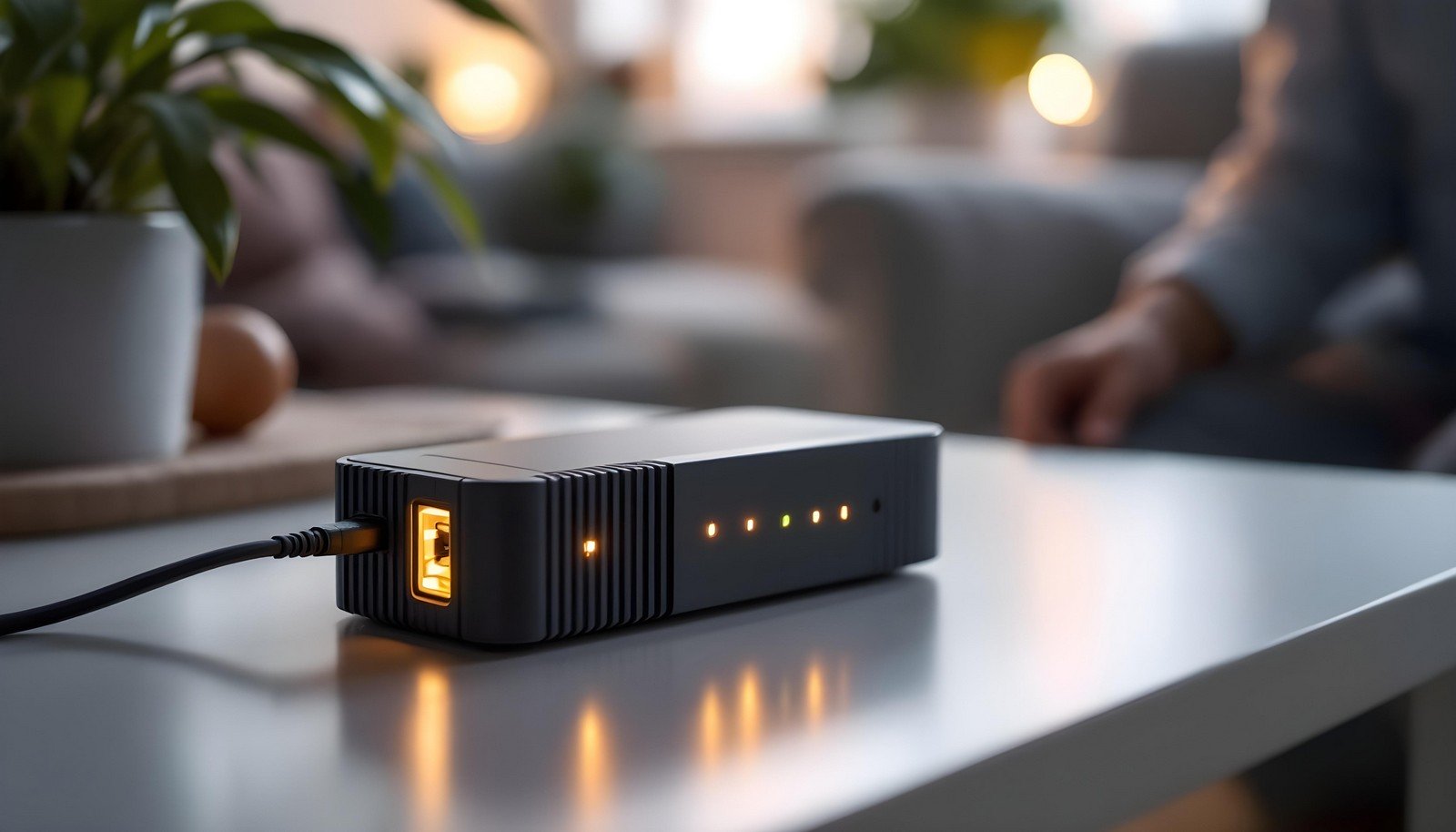Fiber Optic Modem

Quick Navigation:
- Fiber Optic Modem Definition
- Fiber Optic Modem Explained Easy
- Fiber Optic Modem Origin
- Fiber Optic Modem Etymology
- Fiber Optic Modem Usage Trends
- Fiber Optic Modem Usage
- Fiber Optic Modem Examples in Context
- Fiber Optic Modem FAQ
- Fiber Optic Modem Related Words
Fiber Optic Modem Definition
A fiber optic modem is a device used to convert electrical signals into light signals and vice versa for transmitting data over fiber optic cables. These modems play a key role in high-speed internet services, enabling data transfer at significantly faster speeds and greater bandwidth compared to traditional copper-based modems. By leveraging light pulses, fiber optic modems minimize interference, ensure low latency, and maintain signal quality over long distances.
Fiber Optic Modem Explained Easy
Imagine your internet is like a super-fast highway, and the cars are tiny light particles carrying information. A fiber optic modem works like a toll booth that gets the light cars onto the highway and back off again to deliver their messages. It helps your devices talk to the internet really quickly using light instead of regular wires.
Fiber Optic Modem Origin
The origin of fiber optic technology dates back to the mid-20th century, with advancements in fiber optic communication emerging during the 1970s and 1980s. The development of fiber optic modems coincided with the commercialization of optical fiber networks, which revolutionized data transmission.
Fiber Optic Modem Etymology
The term "fiber optic modem" combines "fiber optic," derived from the Latin "fibra" (fiber) and Greek "optikós" (visible), with "modem," short for "modulator-demodulator," reflecting the device’s role in signal conversion.
Fiber Optic Modem Usage Trends
Fiber optic modems have seen widespread adoption due to the increasing demand for high-speed, reliable internet. Their use is prominent in urban areas, data centers, and enterprises requiring robust bandwidth solutions. The growth of fiber-to-the-home (FTTH) services further drives the popularity of these modems.
Fiber Optic Modem Usage
- Formal/Technical Tagging: Optical Networking, High-Speed Internet, Fiber-To-The-Home (FTTH).
- Typical Collocations: "fiber optic modem setup," "high-speed fiber internet," "fiber-to-copper modem."
Fiber Optic Modem Examples in Context
- Many modern homes use a fiber optic modem to connect to gigabit-speed internet.
- Businesses rely on fiber optic modems for seamless video conferencing and cloud-based applications.
- Fiber optic modems are crucial for ensuring low latency in online gaming.
Fiber Optic Modem FAQ
- What is a fiber optic modem?
A device that converts electrical data signals to optical signals and vice versa for internet communication. - How is it different from a traditional modem?
Fiber optic modems use light signals for faster, more reliable data transmission, unlike copper-based modems. - Can I use a fiber optic modem with any internet service?
No, it requires a fiber optic internet service. - What speeds can fiber optic modems handle?
They support gigabit and even multi-gigabit speeds. - Are fiber optic modems expensive?
They can be pricier than traditional modems but offer better performance. - Do I need a special router with a fiber optic modem?
Some modems include a built-in router; others require a compatible router. - How do fiber optic modems reduce interference?
By transmitting data through light, they avoid electromagnetic interference. - Can fiber optic modems be used for long distances?
Yes, they maintain signal quality over much longer distances than copper. - Are they eco-friendly?
Fiber networks use less energy compared to copper-based systems. - What industries use fiber optic modems?
Telecommunications, IT, healthcare, and media streaming services rely on them.
Fiber Optic Modem Related Words
- Categories/Topics: Networking, Telecommunication, Data Transmission.
Did you know? Fiber optic modems enable streaming services like Netflix and gaming platforms to operate seamlessly by handling vast amounts of data with minimal latency. In fact, some fiber networks can transmit data faster than the speed of light through a vacuum, thanks to signal processing innovations.
PicDictionary.com is an online dictionary in pictures. If you have questions or suggestions, please reach out to us on WhatsApp or Twitter.Authors | Arjun Vishnu | @ArjunAndVishnu

I am Vishnu. I like AI, Linux, Single Board Computers, and Cloud Computing. I create the web & video content, and I also write for popular websites.
My younger brother, Arjun handles image & video editing. Together, we run a YouTube Channel that's focused on reviewing gadgets and explaining technology.



Comments powered by CComment